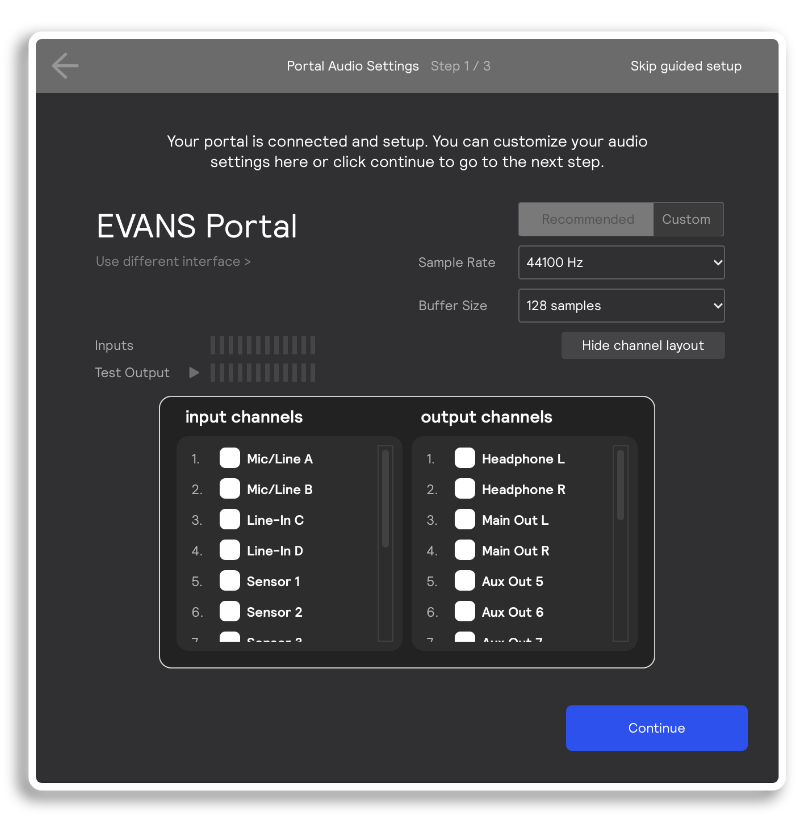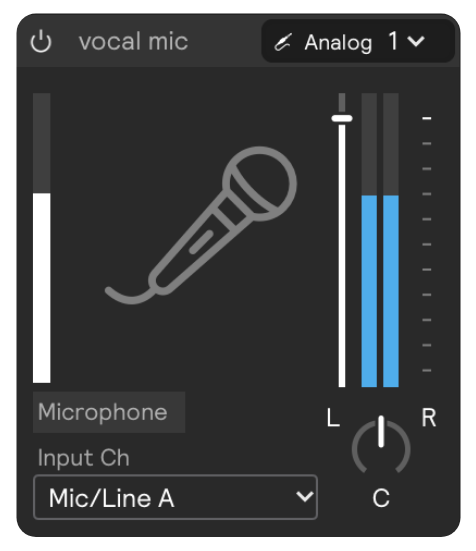Add Microphone Input (or another another audio source)
You have a microphone or a synth or some other cool audio device that you want to route through Sensory?...Here's how to do it!
Check that the mic or audio source is plugged into an enabled input
The first thing to check when you are routing Microphone or other audio input into Sensory Percussion is your Audio Settings.
Make sure that the input channel/s you have plugged your mic or audio source into are enabled in the input channel list.

Create a hardware input and select its input channel
Next, create an analog hardware input by selecting the audio plug icon that appears when you hover over the "+" button to the right of your other hardware inputs.
If this is the first analog input you have created, its badge will say "Analog 1."
From the input channel dropdown, select the channel that your audio source is plugged into. Test the mic or audio source and see if signal appears on the analog input's meter.

If you want, you can change the icon of the hardware input from an audio plug to a microphone, synth, or guitar, (and more), by selecting the button that says "Audio Insert."
Route the analog input into your set
Once you have signal showing up in your hardware input, for it to produce sound, you'll need to route it into your set using the generator called audio insert
Drag it in from the generators section of the library and select "analog1" (or whatever corresponds to the hardware input).

Bring up the fader and you are good to go! You can add FX, and copy and paste this audio insert into your other sets if you want.